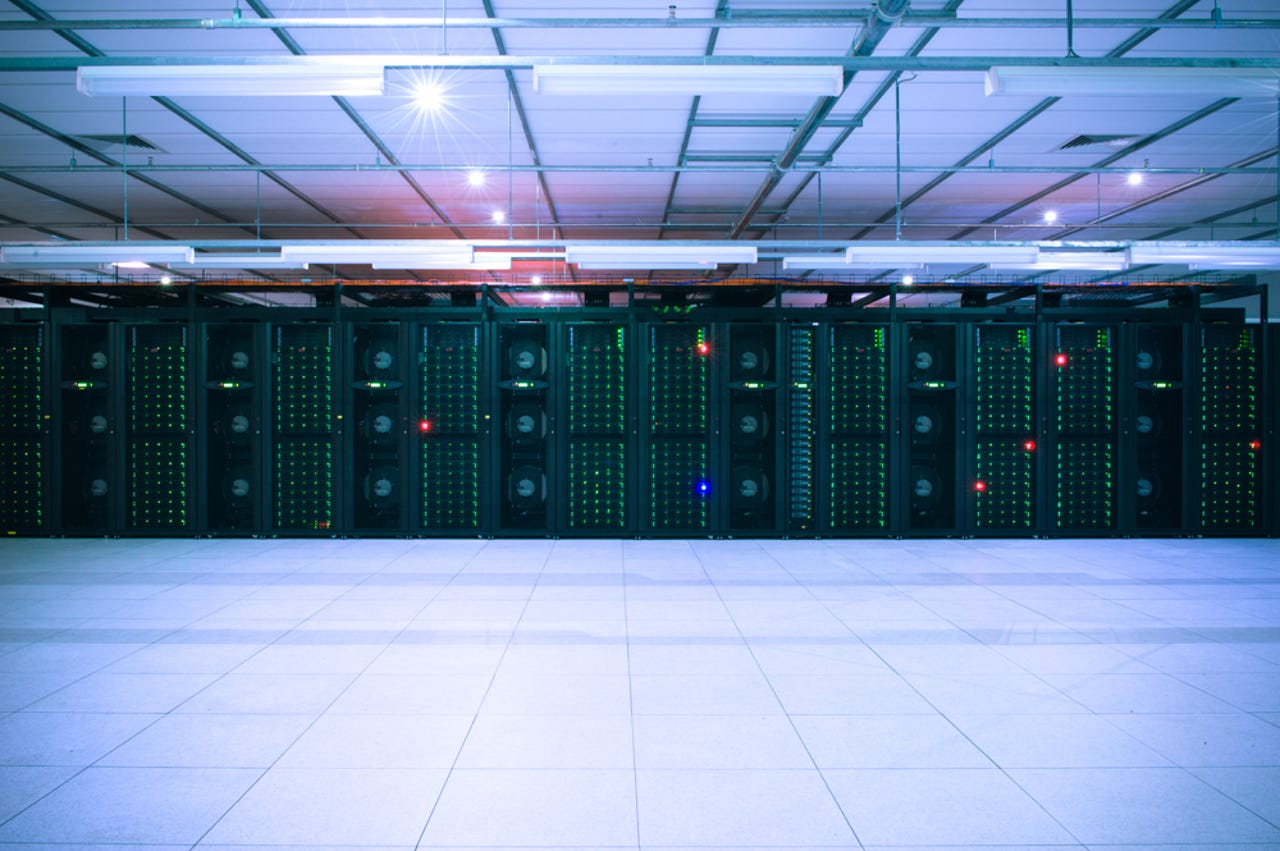NCI scores Raijin replacement and aims for top 25 supercomputer


NCI's Raijin cluster
The National Computer Infrastructure (NCI) at the Australian National University (ANU) has picked up AU$70 million in the Australian government's Mid-Year Economic and Fiscal Outlook (MYEFO) to help replace its Raijin supercomputer, which NCI described on Monday as "rapidly nearing the end of its service life".
The funding will be delivered as AU$69.2 million this financial year, and a further AU$0.8 million next year.
NCI said in a statement that it hopes the new supercomputer will be ranked in the top 25 globally when it is commissioned in early 2019.
"The new NCI supercomputer will be a valuable tool for Australian researchers and industry, and will be central to scientific developments in medical research, climate and weather, engineering, and all fields that require analysis of so-called big data, including, of course, astronomy," ANU vice-chancellor professor Brian Schmidt said.
Raijin, which NCI boasts as the most powerful supercomputer in the southern hemisphere rated at 1.67 petaflops, was upgraded with four IBM Power System servers purchased in December 2016.
NCI manager of high-performance computing systems and cloud services Dr Muhammad Atif told ZDNet in October that Intel CPUs could not keep up with the data throughput needed.
"Because memory is slow, you are feeding data through it a bit slow, which slows down the entire processing," he said. "With IBM Power 8 architecture, what we found is that it's able to feed processor data at much higher rate than normal x86 and this has resulted in applications starting to scale well.
"IBM is actually two years ahead of what Intel was delivering us -- two years is an eternity."
Atif said the use of Power Systems with Raijin's existing x86 architecture gave a two to three times improvement in performance when running on Power 8 architecture, compared to the latest x86 architecture installed at NCI.
Elsewhere in the MYEFO document, the Commonwealth announced that it would trim AU$104 million from the Welfare Payment Infrastructure Transformation (WPIT) program over four years.
The cost of WPIT was previously around the AU$1 billion mark, and is set to replace the Department of Human Services' 30-year-old payment system that is currently responsible for processing over AU$100 billion in Centrelink payments annually.
"The government will deliver the Welfare Payment Infrastructure Transformation (WPIT) program at a reduced cost by using existing commercially available software to deliver an improved user experience and bringing forward the implementation of three projects," MYEFO said.
"The savings from this measure will be redirected by the government to repair the Budget and fund policy priorities."
Minister for Human Services Alan Tudge has previously labelled WPIT as the biggest digital transformation the government has embarked on to date.
"Over the next five years, we're going to be progressively building a new system for each one of the major payments to make it simpler, faster, and cheaper to administer," Tudge said in November 2016.
"We're going from a world today where the system is stifled with unnecessary inefficiency and complexity to a world where there will be progressive transformational change."
The existing health and aged care payments system received AU$16.6 million for "remediation and essential maintenance", which the Department of Health will pay for from existing funding.
For the company responsible for rolling out the National Broadband Network across Australia, MYEFO revealed a bump in its loan from the government of around AU$500 million compared to the forecast at Budget time.
The government also said it would be setting aside AU$38 million over four years for a commercial cloud-based replacement for the reporting of parliamentary expenses, and to replace the existing Comcar management system.
Related Coverage
DHS turning away from end-to-end SAP for welfare payments system overhaul
The Australian Department of Human Services' CTO told ZDNet his organisation is listening to the Digital Transformation Agency's request to shake up the way it procures IT services to include smaller players.
Government-wide SAP deal expected to save IT coin
The enterprise technology firm will continue to provide the Australian government with products and services where appropriate, but under a new whole-of-government agreement expected to save IT procurement costs.
IBM Australia scores AU$96m Human Services mainframe contract
Big Blue has scooped up a AU$96 million contract from the Department of Human Services.
NVIDIA's $3000 TITAN V GPU could turn 'PC into AI supercomputer' (TechRepublic)
NVIDIA claims that its Volta-powered TITAN V is the 'world's most powerful PC GPU' with 110 teraflops of power, nine times more than its predecessor.
Video: How China became the supercomputing superpower (TechRepublic)
TechRepublic's Conner Forrest explains how China leap-frogged the US to the peak of the TOP500 list of supercomputing giants.
Cray supercomputing comes to Microsoft Azure to boost AI workloads in the cloud (TechRepublic)
The strategic alliance will allow Microsoft Azure users to leverage Cray supercomputing systems to run advanced analytics, modeling workloads, and more at scale.